Lesson 12: The Death Penalty, Murder, and Suicide
Attention

Learning Outcomes
Upon completion of this lesson's material, students will be able
- Examine the ideas releated to the Death Penalty, Murder, Suicide and Abortion in the US and aross different cultures
- Assess pratices and differences in regulations, laws and responses to these ideas and actions
- Articulate one or more definitions, statistics and historical information about these topics.
- Understand the varying reactions to such topics that may be encountered and an ability to talk about topics with peers that one might not readily agree upon.
Teaching
Read Chapter 9 and pages 530-532 of Chapter 14 in Course Text
I recognize that these topics as much of what is discussed in this class can be difficult at times and often cause feelings of very differing views and opinions. Please be respectful to each other and reconize we all have varying opinions not necessarily right or wrong but can value an educational review and discussion on such topics.
Because these topics for many reasons could be a whole class on their own, this module is going to focus on giving you statstics and information about each topic and allow you to have an understanding of different types of death, not always of sickness or natural causes.
DEATH PENALTY or CORPORAL PUNISHMENT
Watch this TED Talks on this topics:
And consider these statistics about the Death Penalty in the USA from Death Penalty Org (deathpenalty.org):
In the United States, the largest death row population resides in California, where taxpayers spend $150 million every year to support a system that has killed 13 people in since 1978 and no one in the last decade.
- There are 747 people on death row, 21 women, 726 men.
- Of the condemned, 36% are black men, 32% are white men, 24% are Latino men.
- 1.5% are white women, 1% are Latina women, .3% are black women.
- The condemned range in age from 24 — 82.
- The average length of time an inmate is on death row is 18 years.
- The last execution took place in 2006.
According to Amensty International (amnesty.org):
"At least 1,634 people were executed in 25 countries in 2015. This represents a stark increase on the number of executions recorded I 2014 of more than 50%; in 2014 Amnesty International recorded 1,061 executions in 22 countries worldwide.
This is the highest number of executions recorded in more than 25 years (since 1989).
Most executions took place in China, Iran, Pakistan, Saudi Arabia and the USA – in that order.
China remained the world’s top executioner – but the true extent of the use of the death penalty in China is unknown as this data is considered a state secret; the figure of 1,634 excludes the thousands of executions believed to have been carried out in China.
Excluding China, almost 90% of all executions took place in just three countries – Iran, Pakistan and Saudi Arabia.
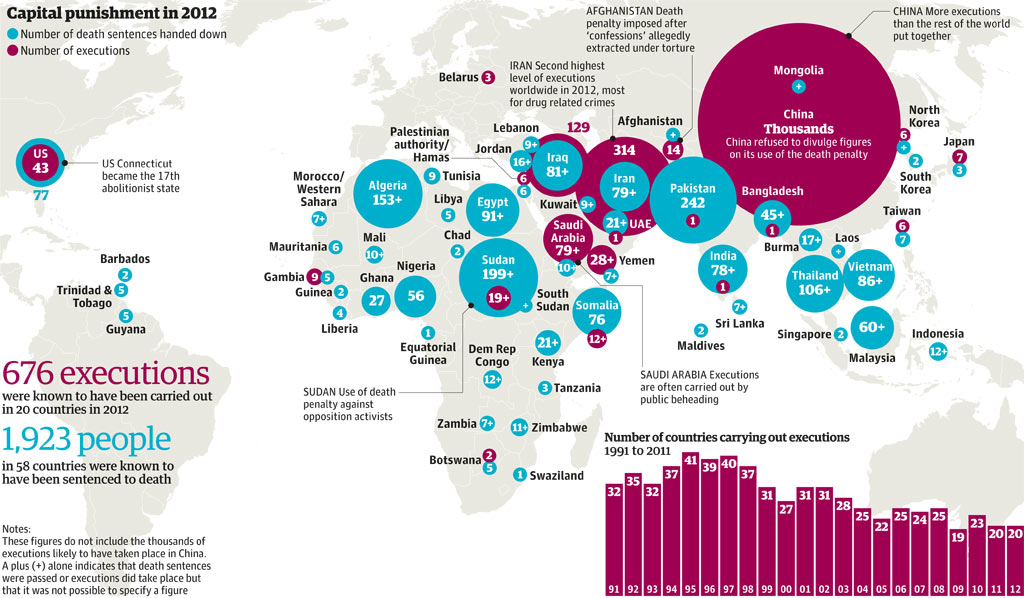
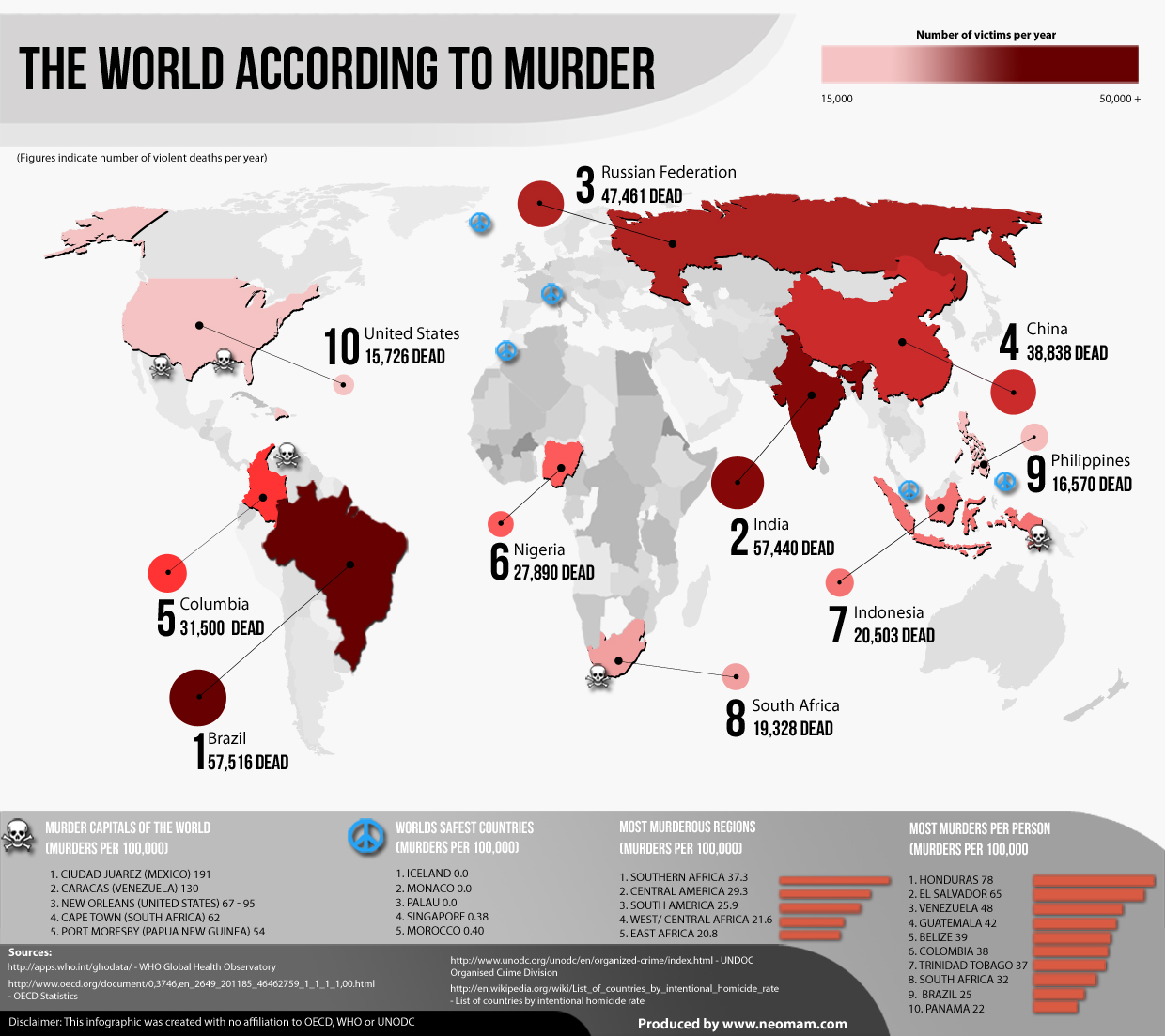
MURDER/HOMICIDE
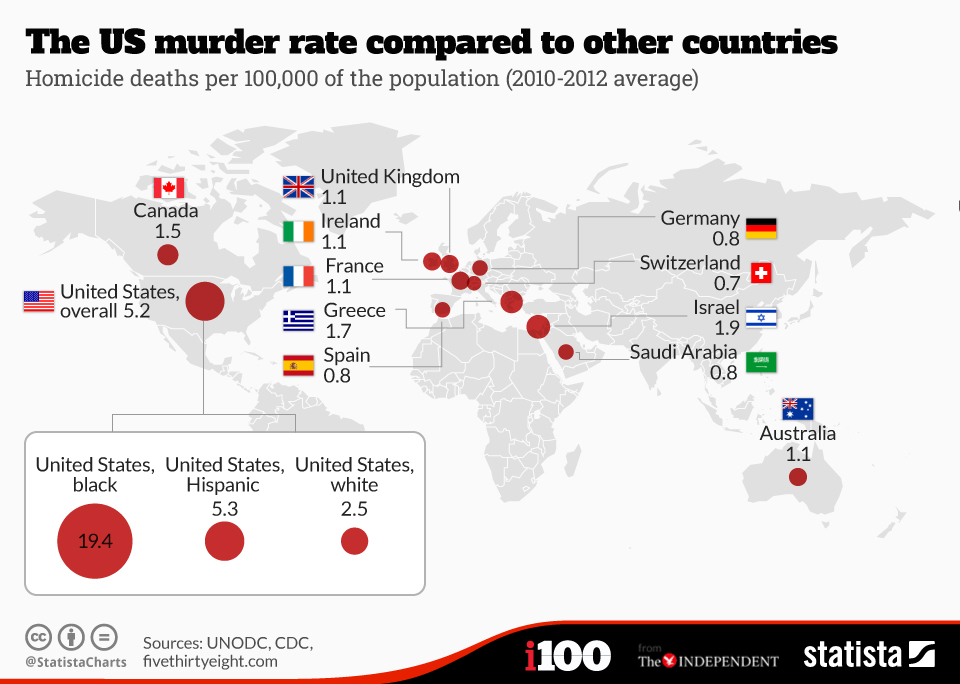
Statistics from the CDC: https://www.cdc.gov/nchs/data/nvsr/nvsr65/nvsr65_04.pdf
SUICIDE:
Watch:
< >
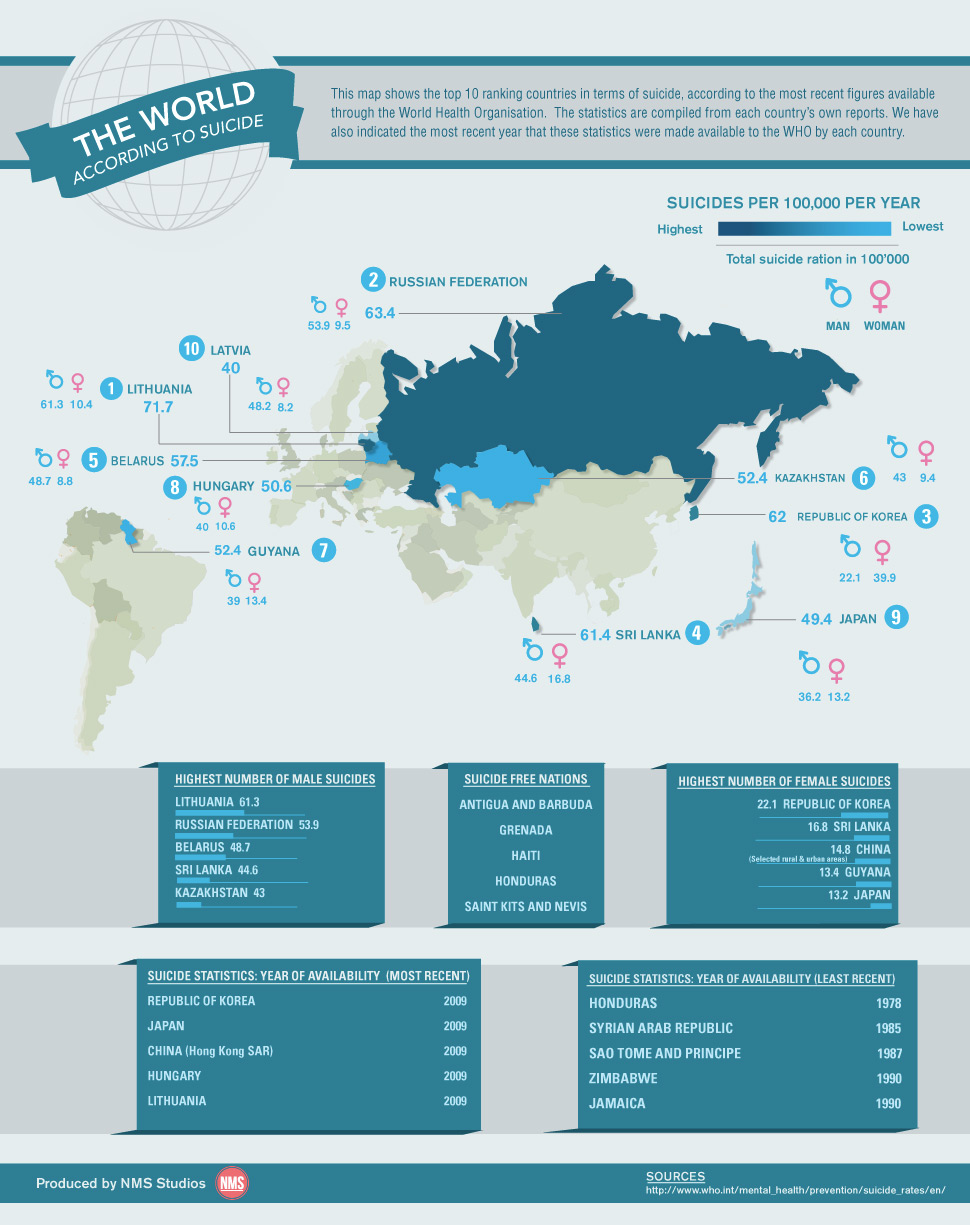
Lastly this info-graphic that was produced to help people recognize the signs of suicide:
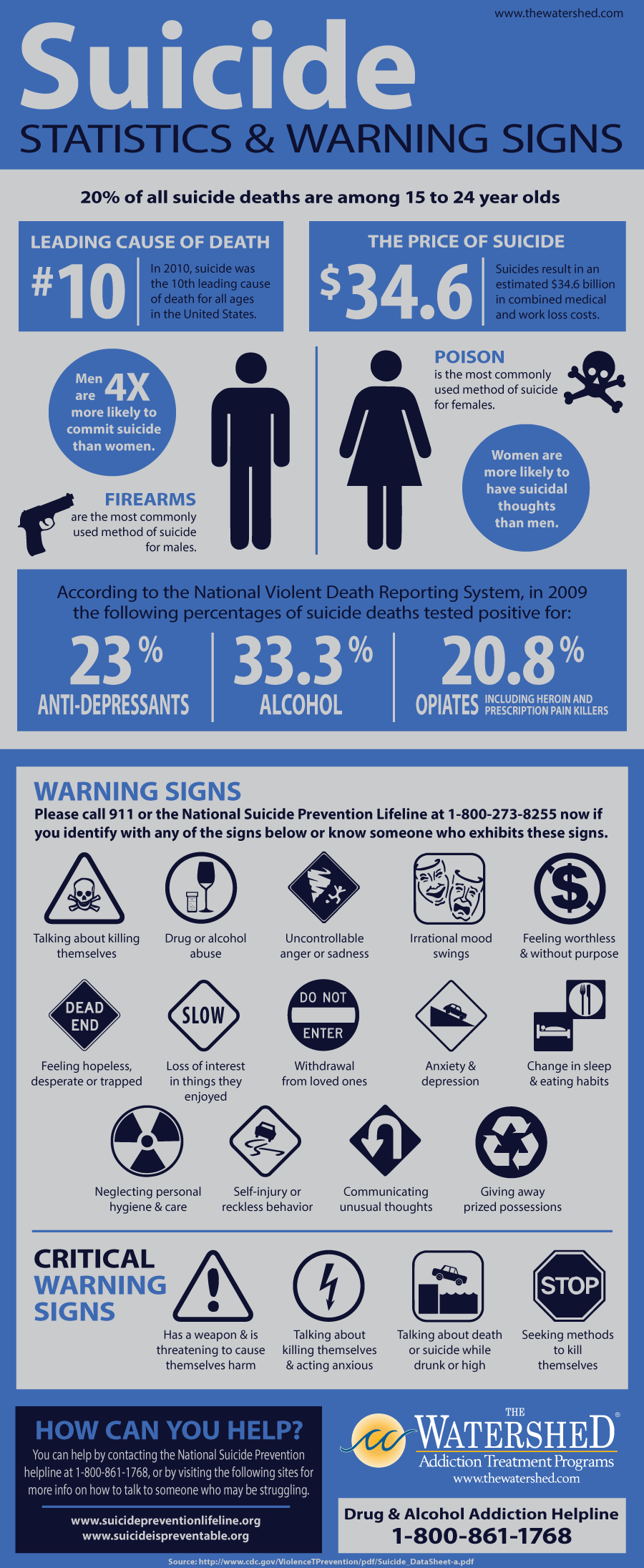
Assessment
Lesson 12 Discussion:
In the open discussion group, explain your viewpoints on capital punishment (Death Penalty) to your peers and reference materials provided, course text or other citations. Why do you think that capital punishment does not serve as a deterrent to homicide and other violent crimes? Explain.
Remember to be mindful of others differing opinions and views on the topic that may differ from yours. The purpose is to have a discussion about the pros and cons as well as the cultural and systemic implications of the Death Penalty from many perspectives.
Lesson 12 Quiz
Answer the following questions (Cite your course text and other learning when appropriate);
1. Define and explain Durkheim's Four Types of Suicide theory.
2. What are some of the common suicide warning factors or signs?
3. What states in the USA currently still use the Death Penalty as a form of punishment for crime?
Lesson 12 Activity
Informally discuss your own viewpoints on the Death Penalty, Abortion and Murder and how it is handled across our own culture and other cultures from the learning in your course text, videos and lesson plan. How does discussing this topic impact you? If you could change laws or legislation around one of these topics what would you propose?